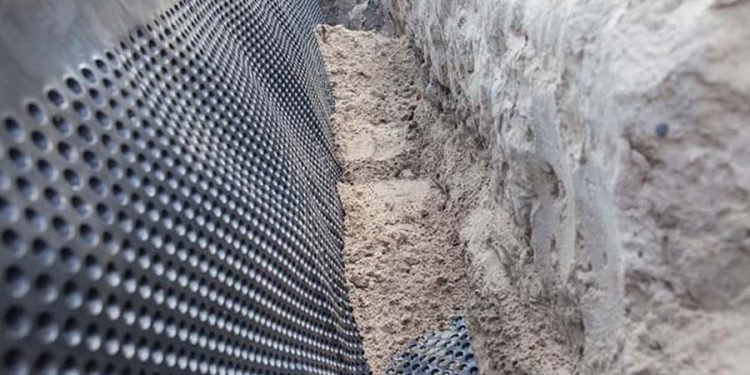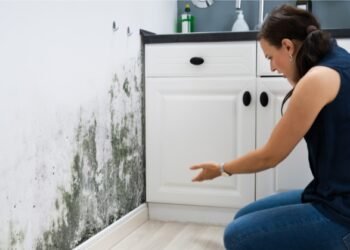Water damage to your home can cost thousands of dollars in repairs. It can ruin your home in minutes, from the discoloration of walls, ceilings, and carpets, to foundation damage and mold infestation. Water damage often occurs through the smallest cracks in the most unlikely places; Sage Management Company says it’s important to notice such spaces and fill them quickly
Exterior waterproofing protects your home from water damage, dampness, and mold infestation. Waterproofing Contractors Minneapolis, MN, will help you with recommendations on which waterproofing service will be effective for your foundation and the cost estimates. Do you have an exterior waterproofing project coming up? Here’s everything you need to know.
How Invasive Is Exterior Waterproofing?
Exterior waterproofing is less invasive if the installation is done outside the home. However, excavation may be necessary if the installation requires a sump pump or other drainage system, and the process can be more invasive.
In such cases, you must excavate the soil around the foundation, and the foundation walls may need waterproofing from the exterior. It involves removing landscaping, walkways, and even sections of concrete or asphalt, which can be disruptive to the surrounding environment.
The invasiveness of exterior waterproofing depends on the specific circumstances of the installation. Consult a professional to determine the best approach for your particular situation.
What’s the Importance of Exterior Waterproofing?
Waterproofing your exterior is a great way to protect your home. Here are the most important ones:
- Protects your foundation – Waterproofing keeps water away from your home’s foundation, which protects it from erosion and damage.
- Keeps water away when the sump pump shuts – The waterproofing membrane will still protect your basement from water when the sump pump shuts down. Repair the sump pump soon, even if it’s a backup.
- Prevents mold growth – Excessive moisture in your home can lead to mold growth unsuitable for anyone with allergies or asthma.
- Reduces energy costs – When water gets into exterior walls, it creates pockets that trap heat during colder months. It increases energy consumption by forcing heating systems to work harder than they should.
- Extends the life of your home – If you live in an area that experiences heavy rainfall or snowfall yearly, having your house waterproofed will extend its life by many years. Water can enter a wall or ceiling from outside, causing severe damage to other parts of the house, such as pipes, electrical wiring, and insulation materials, if they aren’t properly protected.
Waterproofing Materials Types
There are different waterproofing materials. Some are better for certain applications than others, and some have advantages over others and durability.
- Cementitious Coatings are cement-based materials applied to the foundation’s surface, walls, or sidewalks. They are highly durable and can apply to various surfaces. They are also highly resistant to fire and chemicals. However, applying other waterproofing materials is more challenging due to the lack of flexibility.
- Polyurethane is flexible and can apply to concrete, metal, and wood. It’s also durable and resistant to UV rays, making it an excellent choice for outdoor applications. You can also apply it as a foam, which can help fill in gaps and voids and provide additional insulation. It lasts for 25 years.
- Rubberized Asphalt is highly durable and can protect against water intrusion in commercial roofs, plazas, and parking spaces. It is also highly flexible, which can make it effective at preventing cracks and leaks in surfaces that are prone to movement, such as concrete.
- EPDM Rubber is a common type of rubber used for waterproofing. It has excellent resistance to ozone, abrasion, weathering, and aging and can seal vehicles’ roofs, window frames, air conditioners, and trunks.
- Bituminous Membrane – Bituminous membranes come from bitumen-based products like asphalt or coal tar pitch. Bitumen membranes can be used in various climates and environments, from tropical areas to those with harsh winters. They’re also very effective at blocking UV rays, which means they will last longer than other membranes. However, they’re not suitable for areas with high temperatures or where there’s a risk of fire or explosion (like chemical plants).
- PVC Waterproofing Membrane – A PVC waterproofing membrane comes from polyvinyl chloride, a plastic material. You can use PVC material in different applications, including as a protective layer that prevents water from seeping through cracks and holes in concrete surfaces.
Sealing your home with exterior waterproofing is ultimately not complex—as long as it’s done right. A good waterproofing company can get the job done right the first time around, and advise you on how to further protect your home.













